Incredible Ancient Metallurgical Wonders That Defy Explanation And Pose A Real Mystery Even Today
A. Sutherland - AncientPages.com - The Antediluvians had technologies that matched our own; there are also serious indications that in certain areas they even possessed extraordinary knowledge, which has only hardly been nudged by our present-day science.
The 13m high Yu Quan pagoda at Dangyang (Hubei) is created entirely of cast iron. Erected in 1061, it is the oldest surviving cast-iron pagoda. Image courtesy: General Office of Hubei Provincial People's Government
Highly advanced hardening techniques of the ancients as well as ancient castings of large pieces were widespread in antiquity.
Our ancestors were in possession of an extremely sophisticated scientific knowledge of metalworking from an earlier civilization and evidence of this knowledge was found in different parts of the world.
China with a long history in metallurgy was the earliest civilization that manufactured cast iron and some of the ancient Chinese feats of casting iron are so impressive as to be almost unbelievable.
One of them is for example, the cast-iron pagoda entirely built of cast iron at Dangyang, Hubei Province, China, in 1061. It is the tallest (17.9 m high) surviving cast-iron structure, which has 13 stories, built up of cast-iron octagonal sections fitted together by a tenon-and-mortise system.
One large sculpture of legendary fame is the majestic cast-iron lion situated not far from the Grand Canal at Cangzhou, Hebei Province. It was manufactured in 953 AD.
The gigantic lion (5.4×3×5.3 m) weighs over 37 tons. It is hollow and the thickness of its walls varies from 40 to 20 cm. On its back is a lotus pedestal of cast iron weighing circa 5 tons.
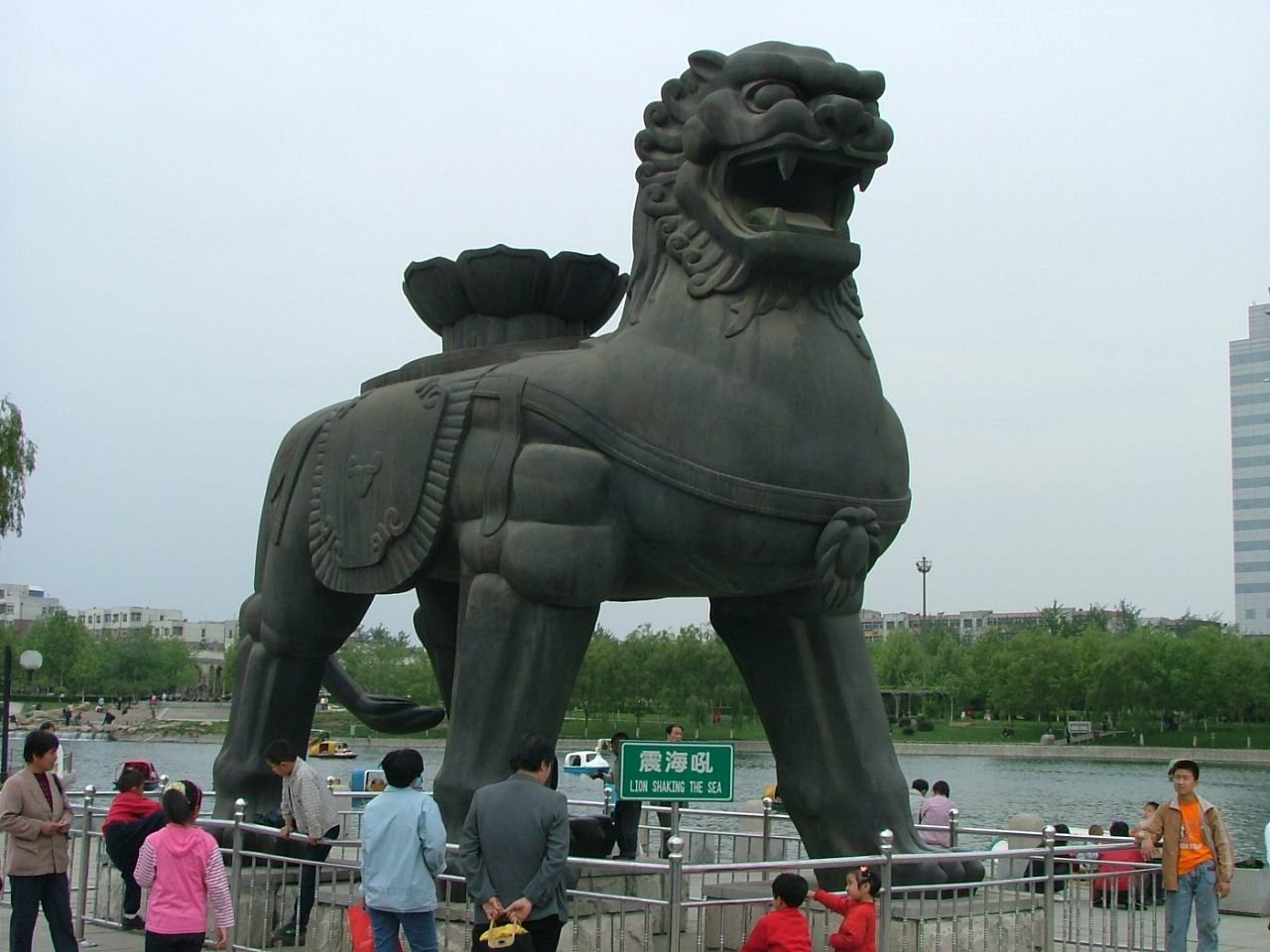 Majestic gigantic cast-iron lion at Cangzhou, Hebei Province was manufactured in 953 AD. It weighs over 37 tons. source
Majestic gigantic cast-iron lion at Cangzhou, Hebei Province was manufactured in 953 AD. It weighs over 37 tons. source
"The mystery of the use of iron in India and China is one that largely baffles modern metallurgists. It is assumed that these countries developed iron and other metallurgical skills after the west, but the evidence points otherwise," says D. H. Childress in his book "Technology of the Gods: The Incredible Sciences of the Ancients" and cites South African archaeologist Nikolaus van der Merwe, saying that "spreading east from the Mediterranean, iron was diffused throughout most of Asia before the Christian era.
"By 1100 BC it was in use in Persia, from where it spread to Pakistan and India. The date of the arrival of iron in India is still a matter of some dispute..."
Ancient Indians, for example, produced iron capable of withstanding corrosion, most likely due to the high phosphorus content of the iron produced during those times.
The height of the pillar, from the top to the bottom of its base, is 7.21 m (23 ft 8 in), 1.12 m (3 ft 8 in) of which is below ground. Its bell pattern capital is 306 mm (12 in). It probably weighs more than three tonnes (6,614 lb). The pillar that stands in the courtyard of Kutb Minar in Delhi, India, has attracted the large attention of archaeologists and specialists because of its high resistance to corrosion and has been called a "testimony to the high level of skill achieved by the ancient Indian iron smiths in the extraction and processing of iron"
Detail showing the inscription of King Chandragupta II, who was one of the most powerful emperors of the Gupta Empire in India. Image credit: User:~shuri - Public Domain
An inscription in the Sanscrit language informs that the column was originally erected in the temple of Muttra and capped with Garuda - "Messenger of the Gods" - an image of the bird incarnation of the god Vishnu, the Indian god known as "The Preserver".
But Muslim invaders destroyed the Garuda and tore the column from its original setting and moved it to the current place in Delhi in the eleventh century. It is unknown how long this impressive iron shaft had been at Muttra.
What was it meant to represent? Was it merely a religious symbol or did it serve any other purpose? To which era does the pillar really belong?
Many legends are devoted to the Ashoka Pillar also known as the Iron Pillar in Delhi, which is said to be in existence for the past 1600 years, but some scholars believe the structure is a few millennia old.
This metallurgical wonder defies explanation and poses a real mystery even today, due to its enormous size and a sizeable casting job related to it. It is difficult to even imagine how such a huge mass of iron was lifted and manipulated during manufacture.
How did the structure manage to "survive" under the Indian tropical heat and violent monsoon downpours?
The iron pillar stands within the courtyard of Quwwat-ul-Islam Mosque. Image credit: stevekc - CC BY 2.0
The column - made up of 98% wrought iron of impure quality - not in any way welded together - seems to have been forged as a single, gigantic piece of iron.
Normally a piece of iron manufactured 1600 years ago would have corroded long ago. But it is not the only mystery of the Ashoka Pillar.
The column - made up of 98% wrought iron of impure quality - not in any way welded together - seems to have been forged as a single, gigantic piece of iron.
Iron with exceptionally high purity can be produced today under controlled laboratory conditions by electrolysis. This knowledge was not duplicated until recent times. It was even possible to produce iron of comparable purity in 1938.
The iron column exists at Kottenforst has its local name the "Iron Man". Image credit: Chris Walters - Public Domain
It was placed at its present location around 1727, but where was it earlier? The artifact has been shrouded in mystery for centuries and still remains the subject of scholarly speculation. Who made it, how and why, is unknown.
Fabrication of the Iron Pillar, seven-ton heavy and seven-meter tall known for its amazing corrosion resistance despite exposure to the wind, sun, and rain in the open for more than 16 centuries is undoubtedly a metallurgical marvel of the ancients.
How metallurgists of ancient India achieved this level of iron purity and what kind of technique they used to cast such enormous iron pillars - remains a mystery.
Another mysterious iron column exists at Kottenforst, a few miles west of Bonn, Germany. It has its local name the "Iron Man". It has the appearance of a squared metal bar, with 4 feet 10 inches above the ground and an estimated 9 feet beneath the surface. The pillar is a unique oddity in Central Europe, and is alleged by some to be an out-of-place artifact.
Like the iron pillar of India, the "Iron Man" of Kottenforst shows some weathering but very little trace of rust.
Who made it, how and why, is unknown.
Written by – A. Sutherland AncientPages.com Staff Writer
Copyright © AncientPages.com All rights reserved. This material may not be published, broadcast, rewritten or redistributed in whole or part without the express written permission of AncientPages.com
More From Ancient Pages
-
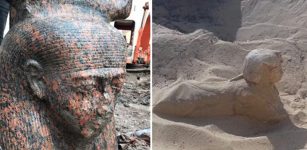 Rare Statue With A Ka Symbol And A Dwarf Sphinx Discovered In Egypt
Archaeology | Dec 18, 2019
Rare Statue With A Ka Symbol And A Dwarf Sphinx Discovered In Egypt
Archaeology | Dec 18, 2019 -
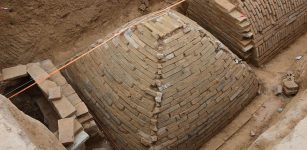 Mysterious Pyramid-Shaped Tomb Discovered In China
Archaeology | Mar 15, 2017
Mysterious Pyramid-Shaped Tomb Discovered In China
Archaeology | Mar 15, 2017 -
 Nastrond (Náströnd): Grisly Hall Of Corpses – Norse Vision Of Most Terrible Place In Niflheim, Kingdom Of The Dead
Featured Stories | Sep 13, 2019
Nastrond (Náströnd): Grisly Hall Of Corpses – Norse Vision Of Most Terrible Place In Niflheim, Kingdom Of The Dead
Featured Stories | Sep 13, 2019 -
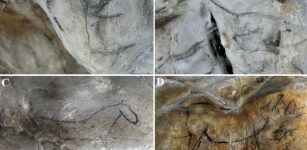 Was Ice Age Cave Art Influenced By Pareidolia?
Archaeology | Oct 7, 2023
Was Ice Age Cave Art Influenced By Pareidolia?
Archaeology | Oct 7, 2023 -
 Giant Egyptian Pyramids Hidden Beneath The Sand Dismissed By Egyptologists Without Investigation!
Archaeology | Jun 29, 2020
Giant Egyptian Pyramids Hidden Beneath The Sand Dismissed By Egyptologists Without Investigation!
Archaeology | Jun 29, 2020 -
 Ancient Mystery Of The Enigmatic ‘Cat Men’ – Advanced Prehistoric Machines Or Humanoids? – Part 2
Ancient Mysteries | Jan 20, 2021
Ancient Mystery Of The Enigmatic ‘Cat Men’ – Advanced Prehistoric Machines Or Humanoids? – Part 2
Ancient Mysteries | Jan 20, 2021 -
 Seven 1,600-Year-Old Arjai Grottoes With Frescoes – Restored
Archaeology | Jul 11, 2020
Seven 1,600-Year-Old Arjai Grottoes With Frescoes – Restored
Archaeology | Jul 11, 2020 -
 Can Fossil Teeth Confirm The “Big Brain – Long Childhood” Hypothesis?
Evolution | Nov 15, 2024
Can Fossil Teeth Confirm The “Big Brain – Long Childhood” Hypothesis?
Evolution | Nov 15, 2024 -
 Are Climate-Related Calamities Erasing Illinois’ Cultural History? An Archaeologist Explains
Earth Changes | Dec 27, 2024
Are Climate-Related Calamities Erasing Illinois’ Cultural History? An Archaeologist Explains
Earth Changes | Dec 27, 2024 -
 Hird – Viking Warriors And Professional Body Guards Prepared To Die For Their Leader
Featured Stories | Mar 22, 2018
Hird – Viking Warriors And Professional Body Guards Prepared To Die For Their Leader
Featured Stories | Mar 22, 2018 -
 Underwater Rock Carvings Of Ancient Egyptian Pharaohs Discovered Near Aswan
Archaeology | Jul 20, 2024
Underwater Rock Carvings Of Ancient Egyptian Pharaohs Discovered Near Aswan
Archaeology | Jul 20, 2024 -
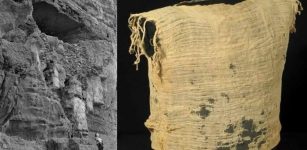 1,900-Year-Old Child’s Nightgown Found In Judean Cave Of Letters
Archaeology | Oct 5, 2023
1,900-Year-Old Child’s Nightgown Found In Judean Cave Of Letters
Archaeology | Oct 5, 2023 -
 Fascinating Discovery Of An Inhabited Underground World In Medieval Wales
Featured Stories | Mar 2, 2024
Fascinating Discovery Of An Inhabited Underground World In Medieval Wales
Featured Stories | Mar 2, 2024 -
 Where Is The Grave Of Queen Boudica?
Ancient History Facts | Aug 15, 2017
Where Is The Grave Of Queen Boudica?
Ancient History Facts | Aug 15, 2017 -
 The Carthaginians’ Secret: Mysterious Desert Land Or America Found By Mistake?
Featured Stories | Jul 27, 2017
The Carthaginians’ Secret: Mysterious Desert Land Or America Found By Mistake?
Featured Stories | Jul 27, 2017 -
 Legacy Of The Iconic Sycamore Gap Tree – Historical Landmark At Hadrian’s Wall
Featured Stories | Mar 28, 2024
Legacy Of The Iconic Sycamore Gap Tree – Historical Landmark At Hadrian’s Wall
Featured Stories | Mar 28, 2024 -
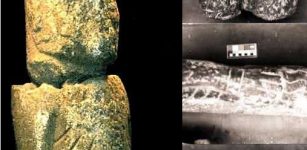 Inscription On Pokotia Monolith Reveals Sumerians Visited Peru Thousands Of Years Ago
Ancient Symbols | Sep 1, 2015
Inscription On Pokotia Monolith Reveals Sumerians Visited Peru Thousands Of Years Ago
Ancient Symbols | Sep 1, 2015 -
 How Did Mesopotamia Change The World?
Civilizations | Jan 18, 2020
How Did Mesopotamia Change The World?
Civilizations | Jan 18, 2020 -
 America’s Mysterious Pedro Mountain Mummy And The Hidden Race Of Little People
Featured Stories | Jul 3, 2014
America’s Mysterious Pedro Mountain Mummy And The Hidden Race Of Little People
Featured Stories | Jul 3, 2014 -
 New York Was Once Called New Amsterdam – History Behind The Change Of Name
Ancient History Facts | Jan 14, 2017
New York Was Once Called New Amsterdam – History Behind The Change Of Name
Ancient History Facts | Jan 14, 2017




